Matador Network's Blog, page 558
December 1, 2021
The best tampon alternatives

When it comes to needing period products, tampons are the go-to option for most. They’re small, comfortable, and easy to use. But they’re not without their drawbacks. Many contain chemicals which, though present in harmless quantities, many people are still uncomfortable about putting in their body. There’s an environmental concern too: According to a 2017 Stanford Magazine article, around seven billion single-use tampons are thrown away each year in the US alone.
Environmental factors aside, tampons just aren’t always practical when you’re traveling: They’re difficult and sometimes impossible to find in parts of the Middle East, Africa, and much of East Asia — and it’s not always feasible (or comfortable) to wear a pad or stuff your backpack with a year’s supply of bulky boxes. There’s also toxic shock syndrome to worry about: You can safely wear a tampon for four to eight hours, which doesn’t work when you’re stuck on a 12-hour night bus or spending all day on a remote beach.
From yoga pants to menstrual cups and period thongs, there are a whole load of surprisingly effective (not to mention environmentally friendly) period products out there. They won’t all be perfect for everyone, but when backpack space and budget is at a premium, here are 9 genius tampon alternatives to take traveling with you.
We hope you love the period products we recommend! Just so you know, Matador may collect a small commission from the links on this page if you decide to book a stay. Listed prices are accurate as of the time of publication. See our full Advertiser Disclosure here.
1. Period pants and boyshorts
Photo: Aisle/Facebook
There are a huge range of comfortable, effective, and downright sexy period products to choose from, not to mention several brands producing boyshort, brief, and boxer options for trans men and gender nonconforming women. Check out these bestsellers from Bambody on Amazon or the company Aisle for some excellent products.
Because you’ll (hopefully) pack underwear to take traveling with you, swapping a few of your regulars out for some of these means you don’t lose any of that precious backpack space to period-related paraphernalia. They’re also super easy to use (just wear them as you would normal underwear), they don’t need to be sterilized before use (just pop them in the wash when you’re done), and they’re non-disposable, which is better for the environment. These are also a great option for those days toward the end of your cycle when you’re not spotting enough to wear anything heavy-duty, but still enough to cause problems without a pantyliner.
Now the downsides. Certain styles can feel bulky and warm, so if you’re traveling in a hotter country, opt for thong designs, or wear under loose-fitting clothing. They’re also pretty expensive (around $30 each), and realistically, you’ll need at least two pairs on rotation. That said, once you have them, provided you take care of them, they should last for years.
2. Period sponges
Photo: Beppy
There are two different types of period sponges: synthetic and natural. Menstrual sea sponges are an all-natural alternative to tampons and when properly cared for, should last up to six months. So if you’re on the road for a year, that means you’ll only need to pack two, which, considering they’re tiny, squishy, cheap, and biodegradable, ticks all the boxes when it comes to traveling must-haves. But — and it’s a big one — they are potentially dangerous. Many have been tested and found to contain grit, bacteria, and mold which can disrupt the ph levels inside your vagina or give you toxic shock syndrome, and there are currently no FDA-approved brands on the market. Getting any kind of ailment abroad can really put a damper on the experience, so our advice is to not risk it until a gynecologist and government-approved version hits the market.
Synthetic sponges, such as the German-made Beppy sponge, don’t have the all-natural, reusable credentials but they are non-toxic and specifically designed for your vagina, which means you’re not putting yourself at undue risk. A major benefit is you can wear them during sex.
3. Menstrual cup
Photo: Mooncup/Facebook
This is essentially a small, flexible cup made of silicone or latex that you fold up then insert into your vagina. Once it’s in place, it springs open to form a watertight seal and collects your period blood for 8-12 hours (depending on how heavy your flow is). When you’re ready to change it, simply pull it out (there’s a little stem on the bottom you can grab), empty the contents in the loo or sink, then wash the cup and reinsert it. When your period’s over, sterilize the cup and store it in an airtight container for your next use.
It’s perfect for travel because you can strut around in a bikini without worrying about those telltale little white strings poking out. It also holds more than a traditional tampon, so you can wear it for longer (up to 12 hours, as opposed to the four to eight hours recommended for tampons), which is great news if you’re on the beach all day and might not have access to bathrooms or bins.
It’s good for your wallet and the environment: You can buy one for around $20. Check out the range at Saalt and Mooncup. Once you have it, it’s reusable and should last anywhere between two and 10 years — perfect for when you’re traveling on a shoestring budget or on an unpredictable income.
4. Yoga pants
Photo: Dear Kate
Period bloat can make you feel like nothing fits, so wearing comfy clothing is a must. These pants, from Dear Kate, feature a form-fitting gusset that catches drips while you hike, work out, do yoga, or lounge around. Most designs are made of a swimsuit-like material, so they’re cool to wear and quick to dry. The downside is, they’re reportedly not always entirely leak-proof, especially if your flow is heavier — so they’re better for the lighter days if you want to wear them with nothing at all, or for teaming up with another method of period protection for extra security on heavy days when you’re worried about drips.
Quality varies, so do your research before you purchase. Some reportedly have a bulky gusset that looks a bit camel toe-y, which doesn’t do much for your confidence when trying to be as discreet as possible. Other options are pretty pricey — think $100 or thereabouts. But, as with the other period wearables, once you have them, they’ll last you a long time and save you having to wear pantyliners while working out.
When it comes to changing and cleaning, just pop them in the wash with the rest of your clothes. If you’re worried about the blood situation, you may want to give the gusset a rinse in the sink or shower before you put them with the rest of your laundry.
5. Cloth pads for panties and boxers
Photo: Aisle
Cloth pads work in exactly the same way as pads and pantyliners, except they’re reusable which is better for the environment, they take up less space in your luggage than hundreds of their disposable counterparts, and once you’ve made that initial payment, you shouldn’t have to fork out for pads for years to come — perfect if you’re on a budget or liable to have months where you’re short on cash. There’s a nice range on Amazon and Aisle. To clean, just chuck lightly used pads in with the rest of your laundry and dry before wear. At the end of heavy flow days, separate the insert from the exterior fabric and soak in cold, clean water before adding to your regular washing.
6. Reusable menstrual disk
Photo: Flex
This operates in much the same way as a menstrual cup, with one major difference: You can wear it during sex. It’s a lot smaller (it looks a little like a contraceptive diaphragm or unopened condom) and is designed to sit a little further back. Once it’s in place, you can enjoy leak-free traveling (provided it’s inserted properly) and period sex without the mess for up to 12 hours. The major drawback to the disc is the removal process: While relatively easy to take out, it can be messier than a menstrual cup, so your best option is to try it out a few times before you go and just to be safe, and remove it in the shower if possible. As with the menstrual cup, make sure you use sterile water to clean it and store it in an airtight container or ziplock bag. It’s also a good idea to buy a couple, just in case you need to change it and you don’t have access to sanitation facilities. The disc from Flex is one of the best versions on the market.
7. Eco-friendly tampons and reusable applicators
Photo: DAME
Eco-friendly tampons are an alternative to traditional supermarket brands, which can be somewhat limited if you’re looking for something that doesn’t contain chemicals or come wrapped in plastic.
If you’re someone who needs an applicator, then check out DAME’s reusable version that was created to help minimize the amount of plastic waste in the ocean. It comes in gender-neutral green and is made from medical-grade silicone, so it’s safe for your body and you’re doing your part in protecting the environment. Tampons that come with single-use applicators are bulkier than non-applicator versions, so if you opt for this reusable version, you’ll also save precious backpack space. Another major travel benefit is that it’s self-sanitizing, so all you need to do is rinse it (use sterilized water if the tap water isn’t drinkable), dry it, and store it away for next time.
8. Period swimsuits
Photo: Ruby Love/Facebook
Swimming is really the only time you absolutely can’t wear a pad, so this is a great option if you know you’ll be traveling in a place where tampons aren’t the norm or you know you’re going to be spending a lot of time in the sea. Simply wear pads with your daywear, then change into this when it’s time to take a dip. There are a range of brands and styles to choose from (Modibod and Ruby Love have the biggest selection of period products), but they all feature absorbent gussets that are designed to be discreet so you don’t feel like you’re wearing a nappy. As with everything, quality can vary, so be sure to try a few out before you commit to one to take traveling.
In terms of cleaning, wash it as you would your normal clothes. If your flow is heavy, it’s a good idea to rinse it out as much as possible before putting it in with the rest of your laundry. And it sounds obvious, but remember to clean it after every use.
9. Tampliners
Photo: Callaly
Gynecologist Alex Hooi created the Tampliner after finding out many women find the combination of period products — tampons and liners — during their periods insufficient and wasteful. While these won’t save you space in your luggage (nor will you be able to find them easily outside of the UK or US), they are an alternative for those who have particularly heavy flows and are worried about leakages. So what exactly is it? It’s essentially a pantyliner with a special membrane that operates as both a way to insert tampons safely and as a replacement for pads. It’s also made of organic biodegradable cotton, so it won’t clog up a landfill after you bin it. 
November 30, 2021
Japan’s latest stunning public toilets are inspired by Mount Fuji
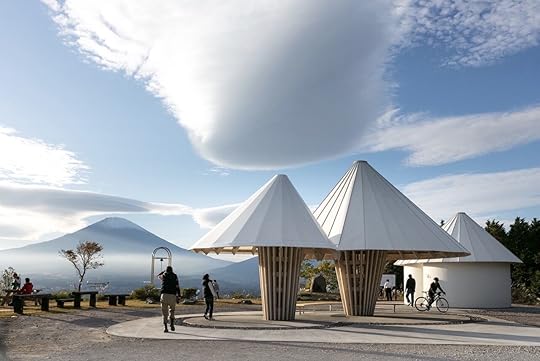
The now famous transparent public toilets designed by Shiberu ban that opened in Tokyo in August 2020 let the world in on a little secret: Japan’s public toilets are some of the prettiest in the world. And the country’s latest public facility, located in Oath Hill Park in Oyama Town, makes sure Japan keeps its reputation intact.

Photo: Kengo Kuma and Associates and Kawasumi Kobayashi Kenji Photograph Office
Designed by architecture studio Kengo Kuma and Associates, these beautiful public toilets opened in October 2021. Inspired by Mount Fuji, the public toilets were built in the observation park on the hillside of the Kintaro Fujimi Line, one of the best spots to snap a picture of Japan’s most well-known volcanic mountain.

Photo: Kengo Kuma and Associates and Kawasumi Kobayashi Kenji Photograph Office
The architectural project includes a sheltered observation area for visitors or hikers wanting to take in the views of Mount Fuji. The shelter consist of two adjoining umbrella-shaped structures of wooden pillars topped by white conical canopies. The public toilets are found beside the shelter and feature the same mountain-peak-like roof. The structure, however, is circular and wrapped in a white opaque material.

Photo: Kengo Kuma and Associates and Kawasumi Kobayashi Kenji Photograph Office
Japan is promising more beautiful public toilets in the near future. The Tokyo Toilet project, which will redesign 17 public toilets in the Tokyo neighborhood of Shibuya, is scheduled to open five more facilities in 2022. Fifteen revamped public toilets opened in 2020 and 2021, including a house-shaped toilet, a mushroom-shaped toilet, and a hemispherical, voice-activated toilet. 
6 Kissimmee Airbnbs for a multi-generational family vacation to Disney

Kissimmee, FLORIDA, sounds like an obscure choice for a family vacation, until you take a close look at a state map. Thirty minutes south of Orlando, the city is located in the heart of Florida’s amusement-park circuit, with easy access to the Walt Disney World Resort complex and Universal Studios. To pull off a stress-free trip to The Most Magical Place on Earth, you’ll need lodging that’s comfortable, convenient, and budget-friendly. Here are six spectacular Kissimmee Airbnbs that fit the bill.
We hope you love the Kissimmee Airbnbs we recommend! Just so you know, Matador may collect a small commission from the links on this page if you decide to book a stay. Listed prices are accurate as of the time of publication. See our full Advertiser Disclosure here.
1. Bella Vida villa
Photo: Airbnb" target="_blank" rel="nofollow noopener">Airbnb

Photo: Airbnb" target="_blank" rel="nofollow noopener">Airbnb

Photo: Airbnb" target="_blank" rel="nofollow noopener">Airbnb

Photo: Airbnb" target="_blank" rel="nofollow noopener">Airbnb
With enough space for 10 guests, this four-bedroom villa is the ultimate crash pad for a Disney-filled family reunion. It has bunk beds for the kids, two tastefully decorated bedrooms for the adults, and a game room, barbecue, swimming pool, and spa for all ages. Even more perks await at the on-site clubhouse, including a cyber cafe, lounge, and gym. Between the numerous shops and restaurants in the neighborhood and the myriad wonders of Disney’s nearby parks, guests are never more than 15 minutes away making their vacation dreams come true.
10 guests, four bedrooms
Price: $154 per night

Photo: Airbnb

Photo: Airbnb

Photo: Airbnb

Photo: Airbnb
Don’t let the immaculate white interior fool you: This four-bedroom townhouse is perfect for families, with kid-friendly amenities like a pack and play crib, high chair, and strollers available on request. Guests also have access to communal facilities including a pool and gym. Complimentary parking is a boon for road-trippers, who’re just a few minutes from the Disney parks and 25 minutes from the Orlando International Airport if they’re only driving locally.
Eight guests, four bedrooms
Price: $109 per night

Photo: Airbnb

Photo: Airbnb

Photo: Airbnb

Photo: Airbnb

Photo: Airbnb
Outdoor luxuriance is the name of the game at this three-bedroom townhouse, from the botanical-inspired interior to the palm-tree-view patio and private hot tub. The gated community surrounding the townhouse is almost like a mini amusement park, with its very own water slides, swimming pool, bar and grill, gym, and beautiful lakeside location. Like the majority of the entries on this list, this Airbnb is equipped for young kids, outfitted with all the essential amenities and a fun collection of children’s books and toys.
Seven guests, three bedrooms
Price: $188 per night

Photo: Airbnb

Photo: Airbnb

Photo: Airbnb

Photo: Airbnb
This stylish condo’s open layout naturally facilitates quality time, whether that means cooking together in the well-equipped kitchen, playing board games at the dining room table, snuggling up on the sofa to plan the next day’s adventures, or doing a little bit of everything all at once. Alone time is also guaranteed in the three well-appointed bedrooms, each of which comes with a smart TV — not something you always find in Kissimmee Airbnbs. On leisurely afternoons, take advantage of the resort’s pool and Hideaway Club.
Six guests, three bedrooms
Price: $135 per night

Photo: Airbnb

Photo: Airbnb

Photo: Airbnb

Photo: Airbnb
With beds so comfortable you melt right into them, a patio set up with sun loungers and hot tub, and clubhouse amenities like a pool and gym, this two-bedroom townhouse is so comfortable you might never leave the property. The kitchen is fully equipped for big family dinners, though the on-site restaurant and variety of eateries in the neighboring Old Town make meal-planning easy if you don’t want to lift a finger during your no-stress stay.
Six guests, two bedrooms
Price: $155 per night

Photo: Airbnb

Photo: Airbnb

Photo: Airbnb

Photo: Airbnb
This three-bedroom townhouse is decked out in beachy decor that makes having access to a private pool, shared hot tub, and cute backyard all the more appealing. In addition to kid-friendly amenities like a travel crib and high chair, parents will appreciate the on-site concierge, clubhouse, and 24-hour security. The townhouse even comes with room-darkening shades to make sure everyone is rested for long days at Disney, which is located just four miles away.
Seven guests, three bedrooms
Price: $104 per night 
11 K-dramas and documentaries to watch to learn more about Korean culture

If you thought Squid Game was the only Korean success story this year, think again. According to language-learning app Duolingo, in October 2021, there were 40 percent more new Korean learners in the US than there were in 2020, and it’s all because Korean culture is having a huge moment (Dalgona candy, anyone?). If you, too, want to dive head first into the Korean Wave, we’ve selected some of the best K-dramas, K-food, and K-pop documentaries for you to watch on Netflix and YouTube.
Best K-dramasTale of the Nine Tailed
Photo: Netflix
Tale of the Nine Tailed is a 2020 fantasy romance series about a nine-tailed fox, or gumiho, a creature from Korean mythology. Traditionally, it’s depicted as an evil shape-shifting fox that can freely transform into a beautiful woman who seduces men, thereafter killing them for their heart or liver. The 16 episodes of this series introduce a creative twist to the legend associated with this mythical creature, however. The male protagonist, Lee Yeon (Lee Dong Wook), is presented as a benevolent nine-tailed fox who was once a mountain spirit that sacrificed his life to resurrect Nam Ji-ah (Jo Bo Ah), the love of his life.
Beyond its new take on the gumiho, the drama also reimagines other recognizable characters and settings from traditional Korean folk tales, such as having an immigration office replace Samdocheon, the river that separates this life and the afterlife, and which we see Nam Ji-ah cross to get reincarnated. Amongst the mythical creatures, we also see a snail bride and an imoogi. Curious? Watch the drama to find out what they are.
Where to watch: Netflix
Guardian: The Lonely and Great God
Photo: Netflix
Better known as Goblin for short, Guardian: The Lonely and Great God is a 16-episode fantasy romance story about a dokkaebi, a mythical being roughly equivalent to a goblin in Western culture.
Kim Shin (Gong Yoo), the hero of this series, is a 939-year-old goblin in search of his bride. His mate, who turns out to be Ji Eun Tak (Kim Go Eun), is the only one who can remove the sword pierced through his chest that makes him immortal.
Typical of romantic K-dramas, Ji Eun Tak’s life mirrors that of Cinderella, and Kim Shin is always there to save the damsel in distress. What makes this drama stand out from the other romance dramas is the humor and chemistry between Kim Shin and the Grim Reaper (Lee Dong Wook).
Where to watch: Netflix
Sky Castle
Photo: Netflix
Education is synonymous with wealth and success in South Korea, and Sky Castle takes a close look at how the rich manage to get their children into prestigious universities. The 20 episodes of the series are all about how the upper class has no qualms about destroying the lives of others to get ahead. The title is also a reference to the top three universities in South Korea, namely Seoul National University, Korea University, and Yonsei University that form the acronym SKY.
This 2018 K-drama series has received multiple awards and found itself as the second-highest-rated drama in Korean cable television history.
Where to watch: Netflix
Hometown Cha Cha Cha
Photo: Netflix
Move away from the hustle and bustle of Seoul to the idyllic (and fictional) seaside village of Gongjin to learn more about “jeong,” the Korean word for affection that emphasizes the kind, collective nature of Korean society. It’s a difficult concept to explain to foreigners, but it’s presented perfectly in the 2021 Netflix hit Hometown Cha Cha Cha.
Yoon Hye Jin (Shin Min-a), a materialistic Seoulite dentist who opens a dental clinic in Gongjin but only charges a stubborn patient for the cost of materials for a dental implant? That’s jeong. The villagers’ antics to distract Hong Du Sik (Kim Seon-Ho) from his depression when he first moved back to Gongjin from Seoul? That’s also jeong.
This laidback, feel-good, 16-episode K-drama ended in October 2021 and is suitable for viewers of all ages as it examines the relationship between self and others.
Where to watch: Netflix
Itaewon Class
Photo: Netflix
Follow the journey of Park Sae Ro Yi (Park Seo Jun), an ex-convict and high school dropout, who believes that success is the best revenge as he takes the slow but honest path to beat his enemy, the heir of a rich industrialist who killed his father in a car accident.
The 16 episodes of this 2020 webtoon-turned-drama tackles taboo topics such as class divides, social inequalities, racism, and LGBTQ discrimination in South Korea, as Park Sae Ro Yi hires a a very diverse staff all at once to work at his new pub in Itaewon. Although these social topics are not unique to South Korea, the effects are dramatized as it is a country widely seen to be conservative, conformist, and homogenous.
Where to watch: Netflix
Fight For My Way
Photo: Netflix
Take a peek into the lives of underestimated youths achieving their dreams in a society that privileges academic credentials and connections. Fight For My Way (2017), a romantic comedy known for its realistic plot, centers its 16 episodes around the main characters and their struggles to find a foothold in their desired careers as underdogs in South Korea.
Ko Dong-man (Park Seo Jun) is a former taekwondo player who once had the chance to become a national representative at the Olympic games but is now muddling through life as a pest control worker. His longtime best friend, Choi Ae-ra (Kim Ji-Won), is a strong and sassy girl who dreams of becoming an announcer but is working as a department store employee at the information desk as she has neither academic credentials nor connections to secure a position in her dream job.
Where to watch: Netflix
Reply series: Reply 1997, Reply 1994, Reply 1988
Photo: Netflix
The Reply series is the show to watch if you’re interested in learning more about Korean daily life before the Korean Wave hit. The K-dramas — which have 16, 21, and 20 episodes, respectively — highlight significant cultural events that happened in South Korea in those years. All three seasons revolve around the themes of family, friends, and relationships across various provincial areas in South Korea.
The Reply series is one of the highest-rated South Korean dramas in the country’s cable television history, with Reply 1988 being the most popular of the series. While it is tempting to start with the most popular season of the series, watch them in chronological order so you get the inside jokes and references throughout the trilogy.
Where to watch: Netflix (1997, 1994, 1988)
Best Korean food documentaries
Photo: Netflix
Few Koreans are unfamiliar with Paik Jong Won, a South Korean chef who has hosted several cooking television series, has his own YouTube channel, and is the CEO of numerous restaurant franchises with branches across the country and around the world. In this two-part documentary (48 minutes each) released in 2020, Paik Jong Won shares his love for good food and explores how Koreans came to love eating pork belly, a national favorite.
Besides cutting up a whole pig and explaining what exactly pork belly is, Paik Jong Won also explores the different grills that have been made over the years, drawing attention to the art and science of making a delicious piece of pork belly.
Where to watch: Netflix

Photo: Netflix
Korean Cold Noodle Rhapsody (2021) is a two-episode documentary follow-up to 2020’s Korean Pork Belly Rhapsody. This documentary features expert food critics, historians, as well as Paik Jong Won, all of whom explain the long history of naengmyeon from Joseon Dynasty (early 1800s) to what it is today.
Naengmyeon, or cold noodles, is one of Korea’s summertime staples. The documentary explains that there are two main types of naengmyeon, but the ingredients largely remain the same: a bowl of naengmyeon consists of thin chewy noodles made with buckwheat, usually topped with an egg and a few thin slices of beef and cucumbers. And while that sounds like a simple dish, the process of making it is a complex affair, especially before the invention and evolution of modern-day buckwheat noodle-making tools.
Where to watch: Netflix
Best K-pop documentariesK-Pop Evolution
Photo: YouTube
K-Pop Evolution (2021) is a YouTube Originals documentary series on how K-Pop became the global phenomenon that it is today. The series consists of seven episodes and dives deep into fandom culture. Before a boy group called Seo Taiji and Boys made their national television debut on a South Korean music show in 1992, the music industry in South Korea was dominated by acoustic folk music and trot — it’s changed a lot since then.
The unexpected overnight success of Seo Taiji and Boys then saw the birth of the first generation K-Pop idols such as H.O.T and g.o.d, which further paved the way for K-Pop’s current global popularity. K-Pop idols from the different generations, such as Joon Park from g.o.d, Leeteuk from Super Junior, and Sandara Park from 2NE1, are featured on the show and share their experiences and thoughts on the industry and its evolution.
Where to watch: YouTube
Blackpink: Light Up the Sky
Photo: Netflix
If you enjoy EDM, hip hop, and rap music, and don’t already know Blackpink, learn more about the group through Netflix’s documentary, Blackpink: Light Up the Sky. Blackpink is a K-Pop girl band that has over 40 million followers on Instagram and close to 70 million subscribers on YouTube, making it one of the most popular idol groups in South Korea at the time of writing.
In this 2020 documentary, fans are shown how the members — Jennie, Jisoo, Lisa, and Rose — went through tough training for five years before finally debuting in August 2016 and eventually rising to the top. Since the band’s debut, it’s broken numerous online records such as having the most-viewed music video within the first 24 hours of release. Blackpink is also the first Korean girl group to have sold more than a million copies of an album: “THE ALBUM.”
Where to watch: Netflix

Book these gorgeous Birmingham Airbnbs near the World Games

Birmingham, Alabama, is home to some of the state’s top attractions including the Birmingham Museum of Art, Birmingham Civil Rights Institute, The Civil Rights National Monument, and many events and activities. Next year, the city will be home to the 2022 World Games. The 2022 World Games will be held from July 7-11 in multiple venues throughout Birmingham. For easy access to the venues, there are 17 Birmingham Airbnbs near UAB, Avondale Park, Birmingham CrossPlex, and other venues where the World Games will occur.
We hope you love the spaces and stays we recommend! Just so you know, Matador may collect a small commission from the links on this page if you decide to book a stay. Listed prices are accurate as of the time of publication. See our full Advertiser Disclosure here.
The best Airbnb rentals for solo travelers and couples in Birmingham, AlabamaThe best Airbnb rentals for families and small groups in Birmingham, AlabamaThe best Airbnb rentals for gatherings and large groups in Birmingham, AlabamaThe best Birmingham Airbnbs for solo travelers and couples in Birmingham, Alabama
1. Mediterranean villa in central Birmingham

Photo: Airbnb

Photo: Airbnb

Photo: Airbnb

Photo: Airbnb
This peaceful Mediterranean villa has a full kitchen and living with an outdoor pool and beautiful skyline views right from your window. Located in the heart of Birmingham, this rental is the perfect walking distance from downtown shops, coffee shops, parks, and biking trails. It’s a convenient drive from The University of Alabama at Birmingham, so it’s right in the center of Birmingham’s nightlife. (only allows min of 30 stays)
Two guests, one-bedroom
Price: $1,384 per month

Photo: Airbnb

Photo: Airbnb

Photo: Airbnb

Photo: Airbnb
This spacious open-floor apartment is a perfect getaway for couples. This big open floor concept features a kitchenette fully equipped with a fridge, toaster oven, microwave, and a plug-in stove. The kitchenette also has a bar top area for eating and drinking. There are two sleeping areas, one king-size bed, and a pull-out sleeper.
Four guests, one-bedroom
Price: $64 per night

Photo: Airbnb

Photo: Airbnb

Photo: Airbnb

Photo: Airbnb
The Groomsmen Inn is a one-bedroom, one-bathroom apartment located in Forest Park, just minutes from Birmingham’s attractions and the 2022 World Games. This property has a full kitchen, combined living and dining room space, an office, and a private laundry room. If you want to enjoy the Birmingham weather, a private patio with a shared grill is a perfect spot to have a morning cup of coffee.
Four guests, one-bedroom
Price: $121 per night

Photo: Airbnb

Photo: Airbnb

Photo: Airbnb

Photo: Airbnb
Who wouldn’t want to stay at a property that’s named one of Birmingham’s most fantastic spots? This unit has a fully stocked kitchenette and a living room with beautiful views of the property’s garden and fountain. The main bedroom has a king-sized bed, smart TV, and a stylish and modern bathroom equipped with all supplies. Guests can also enjoy the open outdoor patio space with an expansive front porch, fire pit, screened-in outdoor dining lounge, natural gas grill, foosball, cornhole, hammocks & fountains.
Two guests, one-bedroom
Price: $270 per night

Photo: Airbnb

Photo: Airbnb

Photo: Airbnb

Photo: Airbnb
Right smack in the middle of Birmingham is this open floor plan loft. It’s equipped with a full kitchen and living area, a private bedroom with a king-sized bed, a loft-style bedroom with a queen-sized bed, and flat-screen TVs. You can enjoy city views from both the bedroom and living room, and you’re right in the center near restaurants, bars, and lounges.
Four guests, one-bedroom
Price: $124 per night

Photo: Airbnb

Photo: Airbnb

Photo: Airbnb
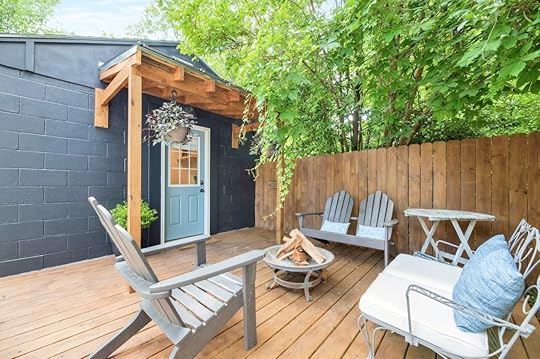
Photo: Airbnb
This Birmingham Airbnb near the World Games is the coziest one of them all. The micro cottage is nestled in the heart of one of Birmingham’s prime neighborhoods. There is a full kitchen, a private cavity for the bedroom with a queen-sized bed, and a spacious bathroom.
Two guests, one-bedroom
Price: $108 per night

Photo: Airbnb
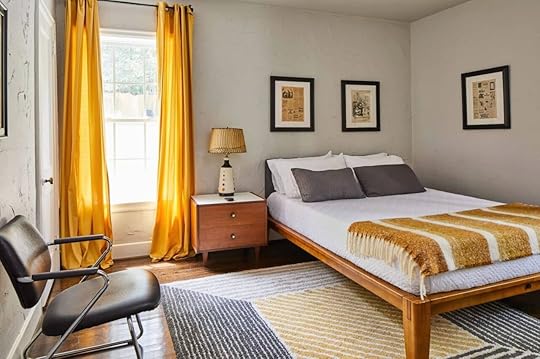
Photo: Airbnb

Photo: Airbnb

Photo: Airbnb
Another famous Birmingham property was named best rental by Birmingham Magazine. This Birmingham Airbnb is equipped with a large deck and a screened porch that comes with a gas BBQ along with a spacious fenced-in backyard for privacy and for the kids and dogs to play in. There are two bedrooms, and this home can sleep up to five guests. The house is also within walking distance of shops, restaurants, and Cahaba Brewing Company.
Five guests, two bedrooms
Price: $130 per night

Photo: Airbnb

Photo: Airbnb

Photo: Airbnb

Photo: Airbnb
This pet-friendly bungalow is just three blocks away from Crestwood Park. This bungalow has two bedrooms with queen-sized beds, one air mattress that can sleep up to six guests in each room, and a full bathroom. There is a kitchen, private patio, and shared backyard space.
Five guests, two bedrooms
Price: $92 per night

Photo: Airbnb

Photo: Airbnb

Photo: Airbnb
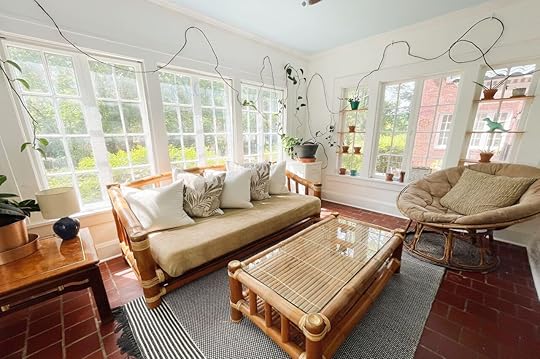
Photo: Airbnb
In the Historic Highland Park neighborhood resides this Birmingham Airbnb home to two bedrooms, a living area with flat-screen TVs, an office area, and an in-house laundry unit. The large backyard has many trees with hooks to hang hammocks and views of the home’s flower, herb, and vegetable garden beds.
Six guests, two bedrooms
Price: $290 per night

Photo: Airbnb

Photo: Airbnb

Photo: Airbnb
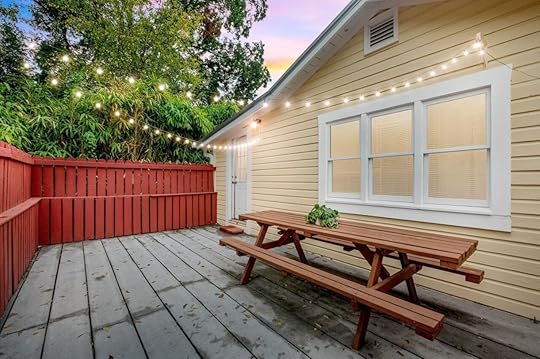
Photo: Airbnb
This comfortable and historic 1920s bungalow is in reach of everything in Birmingham. The two-bed, two-bath home is brimming with bright and vibrant decor. Both bedrooms come with a private bathroom and also a fully equipped kitchen. There is a front porch and a back deck where you can enjoy all that Birmingham has to offer. If you want to check out more of this historic bungalow, you can also visit their Instagram page.
Four guests, two bedrooms
Price: $290 per night

Photo: Airbnb

Photo: Airbnb

Photo: Airbnb

Photo: Airbnb
This luxury condo is located in Downtown Birmingham. This property features a washer and dryer, a workspace, a full kitchen with all appliances and essentials like a Keurig coffee maker, two big flat-screen TVs with Netflix included. Guests will also have access to the resort-style pool, grilling areas, outdoor kitchen, and the gas fire pit lounge area.
Five guests, two bedrooms
Price: $153 per night
The best Birmingham Airbnbs for gatherings and large groups in Birmingham, Alabama
12. The hidden Birdhouse near Downtown Birmingham

Photo: Airbnb

Photo: Airbnb

Photo: Airbnb

Photo: Airbnb
Enjoy this mid-century modern home hidden away on a 1-acre lot not too far from Downtown Birmingham. This home has a fully equipped kitchen and a spare kitchen, a large living room, a dining room that can fit six guests, and three bedrooms. The home is known for its name “Birdhouse” as there are many bird feeders around the backyard, and in the mornings, you can hear birds chirping.
Eight guests, three bedrooms
Price: $153 per night

Photo: Airbnb
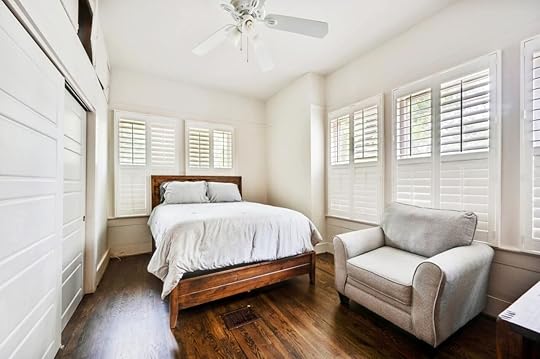
Photo: Airbnb

Photo: Airbnb

Photo: Airbnb
This private home tucked away in the Avondale Park Historic District will be your new home away from home. The recently renovated and upgraded house has a full kitchen that features a microwave, oven, refrigerator, and coffee maker. The open living room has a sitting area with a Smart 55″ HDTV, a second 43″ Smart TV for entertainment, a wrap-around porch, beautiful views, and a bricked courtyard.
Eight guests, three bedrooms
Price: $174 per night
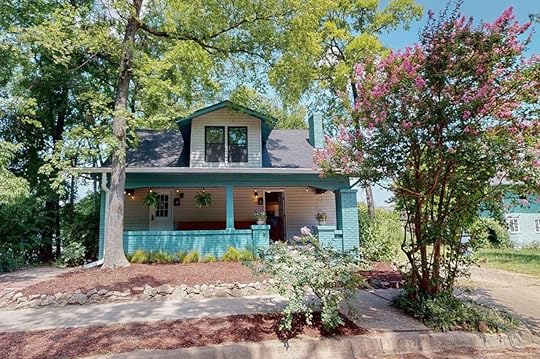
Photo: Airbnb

Photo: Airbnb

Photo: Airbnb
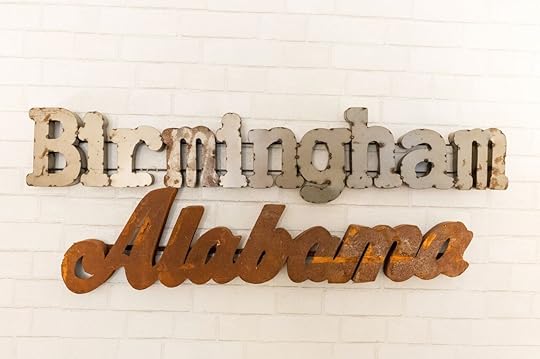
Photo: Airbnb
This rental is the best place to be just a short drive from the University of Alabama at Birmingham. This newly renovated home has three bedrooms, two bathrooms, one located upstairs and one downstairs, and a freshly repaired kitchen with stainless steel appliances and all the utensils and ingredients needed to cook. Amenities include games, welcoming snacks, bathroom supplies, and coffee supplies (unlike many Birmingham Airbnbs you’ll enjoy more than a Keurig).
Six guests, three bedrooms
Price: $170 per night

Photo: Airbnb

Photo: Airbnb

Photo: Airbnb
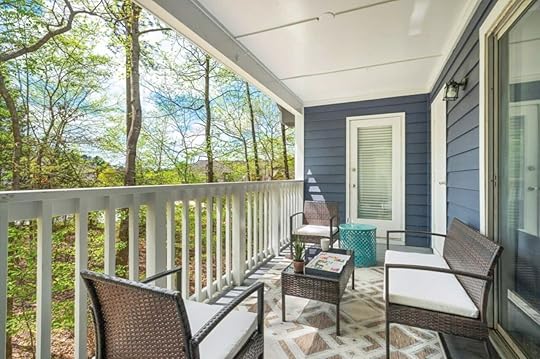
Photo: Airbnb
The perfect Birmingham residence for the family, the hidden property is in a gated community safe for the kids to play and enjoy. There are three bedrooms, the master bedroom, one bedroom with bunk beds for the kids, another with a king-sized bed, and extra sleeping space in the living room. The home has a full kitchen with all appliances, utensils, and cookware provided. Also, if the kids want to read or color, there are dedicated kids desks and an adult workspace.
Ten guests, three bedrooms
Price: $234 per night

Photo: Airbnb

Photo: Airbnb

Photo: Airbnb

This craftsman-style home with an open floor plan has ample living space with a smart TV and a big dining space with a spacious chef-like kitchen and a six-burner gas stove. The main level hosts the kitchen, living, and dining area with one bedroom and one bath. The second level has two more bedrooms, one bath, and office space. The home has a large front porch where you can sit back and relax, a staple among the most popular Birmingham Airbnbs.
Ten guests, three bedrooms
Price: $151 per night
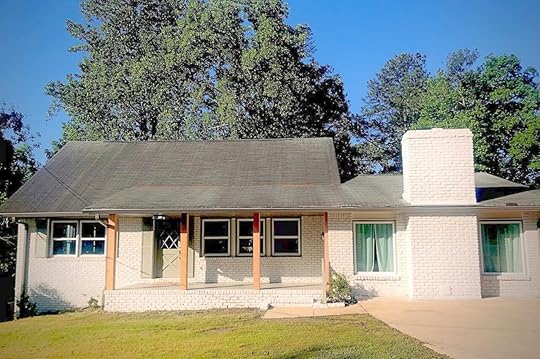
Photo: Airbnb
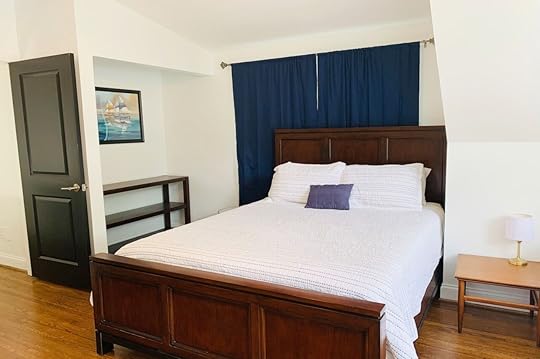
Photo: Airbnb
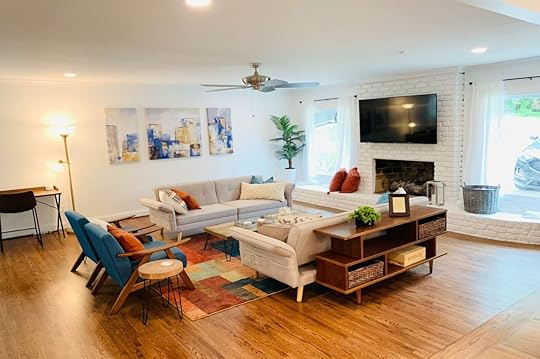
Photo: Airbnb

Photo: Airbnb
This Crestwood home has everything your family or group needs for the perfect Birmingham gateway. Completely revamped in every room, this home has everything for your stay, the newly remodeled kitchen with a massive island with enough cookware and utensils for up to 16 people. The living room features two couches, chairs, a desk and TV with Apple TV, and the dining area and laundry room attached. There are three bedrooms and a newly raised porch in the back, making this one of the most convenient Birmingham Airbnbs near the World Games for pre-gaming. 
Ten guests, three bedrooms
Price: $229 per night
19 best hygge gifts to warm your home this winter

When reading a book in a coffee shop or cuddled up in your favorite sweater, have you ever experienced a sense of complete calm and comfort? That’s called hygge — which is Danish and Norwegian for a cozy mood mingling with feelings of contentment. Here at Matador Network, we know the importance of feeling a sense of stillness in our fast-paced world. Focusing on natural materials, we selected a few of our favorite relaxation gifts to bring the feeling of hygge into your home this holiday season.
We hope you love the gifts we recommend! Just so you know, Matador may collect a small commission from the links on this page if you decide to book a stay. Listed prices are accurate as of the time of publication. See our full Advertiser Disclosure here.
1. Confetti Candle Co Candles
Photo: Etsy
With candle scents like hygge, cozy cabin, and fall comfort, it’s no wonder Confetti Candle Co made our list. Their candles are natural soy wax, and the calming white candle with golden accents will help create the coziest aesthetic in your home. Whether these are for you or your best friend to cuddle up next to, these candles don’t only smell great, but their ambient glow will be the perfect gift for relaxation.
Price: $24.00
2. Handmade Ceramic Mug
Photo: Etsy
There is nothing like getting comfy on the couch with hands wrapped around a warm cup of tea or coffee. That’s why we need to include these beautifully handcrafted mugs. Both microwaveable and dishwasher friendly, these ceramic mugs have a wide cylindrical body perfect for warming your hands and relaxing while reading a book on your window seat.
Price: $32.95
3. Macrame Plant Hangers
Photo: Etsy
Creating the hygge aesthetic is all about selecting comforting, natural materials. That’s why we love these macrame plant hangers — they’re perfect for nestling in your plant buddies. Coming in a variety of colors, these handwoven macrame plant hangers will help give your home a hygge feeling wherever they hang.
Price: $9.07
4. OluKai Nohea Heu Slippers
Photo: REI
Snuggled feet are a must, and that’s why we love the OluKai Nohea Heu Slippers. Fleece-lined and extra-soft, these have removable and washable footbeds so you can wear them sans-socks without fear of mucking up the soft fabric. Even better, they have a drop-in heel, so you won’t ruin them by sliding your feet in and out. Perfect for creating a sense of comfort, these slippers are a must when looking for relaxing gifts.
Price: $100.00
5. Pampas Grasses
Photo: Etsy
Adding a bit of nature to your dwelling doesn’t mean you need a green thumb. Pampas grasses, which are tall flowering ornamental grasses, have been making their debut inside to help add natural vibes to any room. Both faux stems and dried stems are sold, and either can be placed in a vase to create a more inviting space.
Price: $23.53
6. Customizable Wool Wall Hangings
Photo: Etsy
Gifts are special when you can customize them, and that’s exactly why we love the customizable wall hangings from HarlowViolet. These handmade gifts are perfect for a reading nook or nursery, and the color pallets available mean you can customize colors, mix-and-match, or just get one. Knit wall hangings help add some warmth to a room, while also filling that bare space on your wall — all part of crafting that sought-after hygge feel.
Price: $10.50
7. Eddie Bauer Fireside Plush Pullover
Photo: Eddie Bauer
There’s nothing like cuddling up in a big, cozy sweater to give you that feeling of warmth and contentment. This relaxed fit plush pullover from Eddie Bauer is the oversized layer you’ve been looking for. Made from soft sherpa material and styling a loose mock neck for added warmth, this sweater is perfect for cozying up inside when it’s getting cold outside.
Price: $43.00
8. All Natural Handmade Artisan Soap
Photo: Etsy
Hygge isn’t just about decoration — handmade soap is a unique way to create a sense of wellness and comfort. Natural soaps can be crafted out of anything from essential oils to flowers, and these are some of our favorites for relaxation. Organic, vegan based, and 100 percent natural, these artisan soaps look like a piece of art and are the perfect gifts for you or your best friends.
Price: $7.50
9. Rustic Ceramic Planters
Photo: Etsy
Having a green thumb is only a piece of the puzzle when creating your hygge-aesthetic. Finding the perfect plant pots can help create a sense of calm while adding a chich design element. That’s why we love these handmade, rustic ceramic planters. Functional and beautiful, the raw edges create a natural feel in any room. Adding another layer of calm, they are also dishwasher safe.
Price: $48.00
10. Floral Engraved Boho Moon
Photo: Etsy
Bound to be the perfect gift for any hygge-seeker, this boho moon is engraved with a beautiful floral print. This light wood will add a soft touch to any space, and bring together two fragments of nature — the moon and flowers. Great for hanging on your wall or setting on a shelf, this light, birch wood-engraved moon will help you subconsciously unwind and relax.
Price: $28.00
11. Eddie Bauer Plush Sherpa Fleece Throw
Photo: Eddie Bauer
No hygge-home is complete without a big, soft blanket– and that’s why we love the Eddie Bauer Sherpa Fleece Throw. Reversible, diverse, and the perfect gift for relaxing, this blanket has 4.7 stars out of over 6,900 ratings on Amazon. Made with faux shearling popcorn fleece, this blanket is perfect for your friends or yourself — and will be sure to make any home extra snuggly this holiday season.
Price: $21.59
12. Minimalist Mid-century Bookends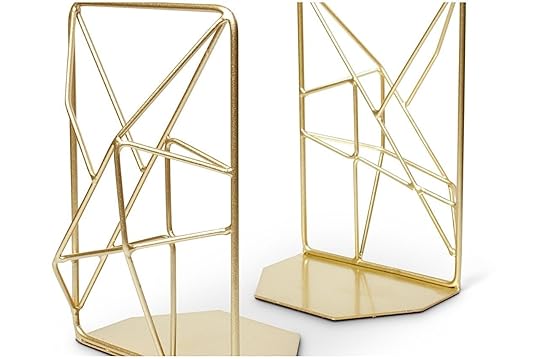
Photo: Etsy
Cozy feelings and books go hand-in-hand, and that’s why we’re including these beautifully crafted, mid-century bookends. Handmade with ethically and sustainably sourced materials, these bookends come in a variety of colors which are perfect for adding a little color to your space. No-slip stickers protect your shelves and make sure there are no book-falls to ruin your hygge ambiance. Perfect for any bookworm, this is one of our favorite gifts to add a little bit of organization and relaxation to any room.
Price: $39.00
13. Leather Journal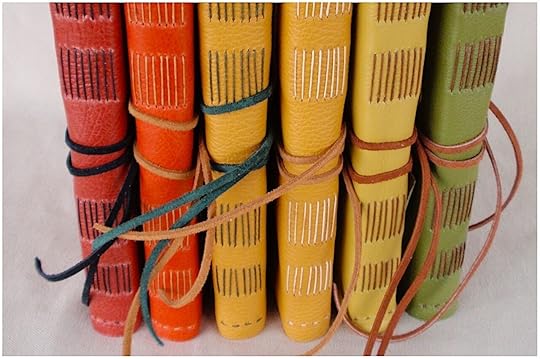
Photo: Etsy
With a warm cup of tea and snow falling outside, there’s nothing quite as calming as writing in a handmade, soft leather-bound journal. Beautiful colors and supple leather means these journals are unique and fit right in at any hygge-inspired home. Give the gift of self-care and the relaxation that comes with journaling, and make it special with one of these beautifully crafted handmade leather journals.
Price: $59.00
14. Hygge Gift Box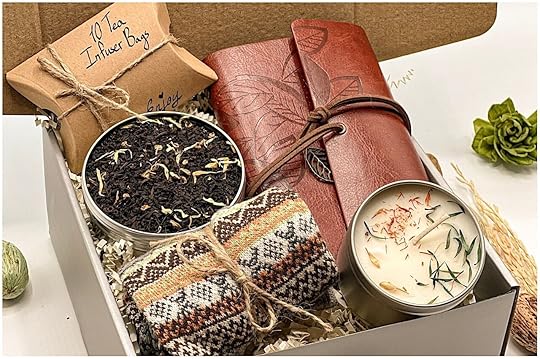
Photo: Etsy
Holiday shopping might stress you out, which is the opposite of what hygge roots from. That’s why we are adding these hygge gift boxes, which are perfect for friends, family, coworkers, or yourself. Handmade, and complete with tea, cozy socks, a wax candle, and vegan leather journal, this box will inspire contentment in whoever receives one. If you’re not into searching endlessly for one perfect gift, then this pre-made gift box is your answer.
Price: $33.99
15. Essential Oil Diffuser and Humidifier
Photo: Etsy
Perfect for creating a relaxing atmosphere, this is both an essential oil diffuser and humidifier in one. We love the beautiful colors it can come in — either wood or marble inspired — and it’s small enough to fit on a shelf or desk. Essential oils are known for reducing stress and helping you sleep, all perfect when creating a hygge ambiance in your home.
Price: $27.99
16. French Lavender Goat Milk Lotion
Photo: Etsy
Hygge isn’t just about cozy clothes and welcoming decoration, it’s also about self-care and making sure you feel comfortable in your own skin. This luxurious French lavender lotion is sure to fend off that winter dryness we all experience. Made with skin-friendly oils and fresh goat milk to help exfoliate, this lotion is handmade and comes from the Nustad Family Ranch, located in Monterey California.
Price: $17.79
17. Fjällräven Vardag Classic Beanie
Photo: REI
Cozy cabin vibes mean beanies, and our go-to is the Fjällräven Vardag Classic. It’s double-layered, so it’ll stay warm and you won’t have to worry about this beanie losing shape. It’s cozy enough to wear in your home but stylish enough to wear out-and-about. The perfect hat to throw on when you want to relax and warm up with a cup of tea, the Vardag Beanie is a great fit for any relaxation-searching shopper.
Price: $30.00
18. Beginner Embroidery Kit
Photo: Etsy
If you’ve ever been intimidated by embroidery, this kit is for you. The perfect craft for snuggling under a blanket on the couch, embroidery is relaxing once you get the hang of it. We’re big fans, and that’s why we’re including this beginners kit which comes with everything you need to start your own embroidery project, including a hoop, linen, needles, thread, and instructions.
Price: $11.69
19. Baker’s Field Flour and Bread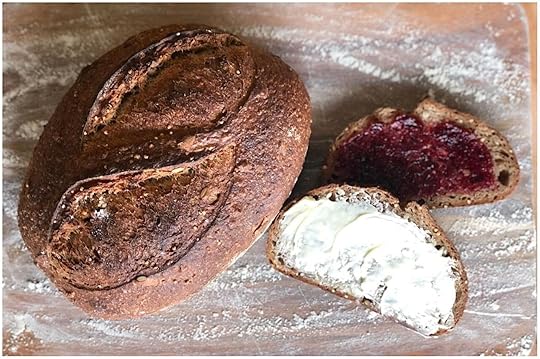
Photo: Baker’s Field Flour and Bread/Facebook
Hygge isn’t all about what you wear, sometimes it’s about what you do. The smell of fresh bread is a comfort all on its own, but baking it yourself can create a sense of simplicity and calm. We found Baker’s Field Flour and Bread, a flour mill that sells freshly milled flour. Baker’s Field stone-mills local whole grains that are resilient and regenerative for the soil in a changing climate, which means you can feel good about the hygge-inspired hobby of baking fresh artisan bread. 
Price: From $10.00
More like thisHolidaysThe most beautiful Scandinavian holiday decorations in Etsy’s Christmas saleNovember 29, 2021
A flight attendant explains the sound you never want to hear while flying

There are familiar routines that frequent flyers get used to: The pilot or a flight attendant welcoming you on board, the safety instruction sequence, and the roaring of the jets as you take off from the runway. Anyone who has taken a flight has also probably noticed the occasional “ding dongs” that go off during your flight. These sounds aren’t just arbitrary noises to ignore. They’re actually the language used by airlines to communicate with passengers and other flight attendants.
Flight attendant and TikToker tommycimato took to his channel to explain what some of those bells mean. Some of the most common dings you’ll hear on a flight include the singular note that signals a call for a flight attendant to reach a passenger. A high-low chime is a call for the other flight attendants or the flight deck to reach each other. And then there’s the chime that, hopefully, you’ll never have to hear: three high-low chimes, which signals an emergency situation.
@tommycimato #fyp #flightattendant #airline #aviation #travel #explore ♬ Vacation – Dirty Heads
In the past, Qantas Airways explained some of its codes. A second ping after takeoff means the seatbelt sign is off. And a triple low-low chime means the crew should prepare for turbulence. Other codes for various airlines are kept secret for safety reasons. So while those little bells might wake you during your inflight nap, it’s worth it to pay attention, because even codes like these are not always universal.
How to find drinks, volcanoes, and waterfalls in the tequila capital of Mexico
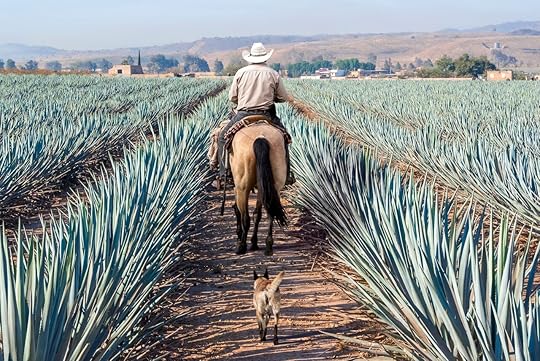
Jimmy Buffet once said, “I ain’t no drinking man, but temptation got the best of me.” In my case, it’s more like, “I ain’t no tequila man, but temptation got the best of me.”
A lifelong whiskey guy, I’ve never really dabbled in the world of tequila. That’s why, when I got the opportunity to visit the Casa Salles tequila hotel right next to a distillery in Tequila, Mexico, I admit I was initially a little hesitant. But as Buffet would surely understand, the allure of learning about tequila in the drink’s birthplace was simply too tempting to pass up — even for a whiskey guy.
As it turns out, you don’t have to be a tequila connoisseur to enjoy a trip to Tequila. Even if your only experience with tequila is cheap shots in a college bar at 2 AM, Tequila is the perfect place to broaden your base of knowledge and expand your palate.
“Tequila is a way of life here,” as Steffin Oghene, vice president of marketing and sales at El Tequileño, puts it. “There’s a bar or distillery literally around every corner, so it’s really the heart of the tequila world.”

Photo: posztos/Shutterstock
This “heart of the tequila world” mentality holds true for the chemical makeup of the spirit itself. Driving into Tequila from Guadalajara, the nearest major city, you’ll likely notice some signs that you’re heading toward the capital of tequila before you actually get there. Tequila is located between the foothills of the Tequila Volcano and the Rio Grande de Santiago valley, and it’s surrounded by rolling fields filled with blue agave.
For more than 2,000 years, people have made alcoholic beverages with the region’s blue agave, though the first looked much different than contemporary tequila. Pulque was the dominant drink made from agave in pre-Columbian Mexico (and the low-alcohol fermented drink is still consumed in Mexico City and other parts of the country). Spanish conquistadors who colonized the area began distilling fermented agave juice to make liquor in the 1500s, and the “father of tequila,” Don Pedro Sanchez de Tagle, started producing his spirit around 1600. Then, in 1758, the Cuuervo family was granted the first license to commercially produce tequila.
This was only one type of spirit made with Mexico’s many types of agave (today, the types of agave distillates have been further classified). To set the spirit made here apart from the rest, the style was christened with the name of the town where production started. Thus, Tequila granted its name to tequila.
There’s a lot more that goes into the tequila of today compared to the loosely-defined drinks of the 16th century. Tequila is a protected drink, and producers have to follow a strict set of rules to be able to label their liquor tequila. First and foremost, tequila must be made with at least 51 percent blue Weber agave. The rest can be distillate spirit from other sources. Where it’s made matters, too. Tequila must come from one of five states in Mexico: Jalisco, Guanajuanto, Michoacan, Tamaulipas, or Nayarit.
As you can imagine, in the town of Tequila, a UNESCO World Heritage Site, they take their tequila pretty seriously. But this is no token tourist destination. Tequila is home to dozens of active tequila distilleries, including El Tequileño, José Cuervo, El Pandillo, and Casa Sauza. There’s a cozy tequila bar on every corner, and it’s filled with people who fully embrace the tequila state of mind.
Even if tequila isn’t your drink of choice, its town of origin is the perfect place to acquire a taste for both the spirit and the waterfalls, agave fields, and volcano that add to the stunning natural beauty of the region.
Where to drink tequila in Tequila, Mexico
Photo: Alberto Valenzuela/Shutterstock
Don’t worry if you’re new to tequila and not really sure where to start. They’ve got it all here, and it won’t take long before you find a tequila that tickles your palate.
La CapillaThis is a great place to start. The oldest and most legendary bar in Tequila, La Capilla appeared on the list of the World’s 50 Best Bars from 2011 to 2015. With a dark, rustic aesthetic, a plywood bar, and plastic tables, this place will make you feel right at home as you settle in with a batanga — the bar’s signature drink of tequila, coke, and lime juice served in a glass with a salted rim. While it sounds simple, there are some specifics that make La Capilla’s batanga stand out. In its purest form, the cocktail requires Mexican Coke made with sugar cane rather than corn syrup, and El Tequileno’s tequila blanco, making Tequila the best (if not only) place in the world for an authentic Batanga.
Where: Hidalgo 34, Centro, 46400 Tequila, Jal., Mexico
Catrina CantinaAnother bar bursting with character. Here, the decor is reminiscent of Día de los Muertos year-round, with colorful “catrinas” — female skeletons that have become a symbol of the holiday — adorning the walls alongside license plates and a giant mounted deer head. A blend of traditional Mexican cantina and a familiar dive bar, Catrina Cantina is one of the liveliest bars in town and a staple of weekend revelry.
Where: Sixto Gorjón 133, La Muralla, 46400 Tequila, Jal., Mexico
Cantaritos El GüeroIf you don’t mind taking a small trip, Cantaritos El Güero is one of the most popular and iconic tequila bars in the area. It’s located about a 15 minute drive from the town itself and it’s one of the most well-known venues in all Mexico for ordering cantaritos drinks — clay pots filled with a mixture of tequila and fruit juices, with a rim of salt and spices. The drink is native to the state of Jalisco, and can commonly be found at local fairs and celebrations throughout Mexico. You can take your drink to-go as you cruise through the valley (with a designated driver, of course). And yes, you’re allowed to keep the clay pots.
Where: Carretera internacional libre Guadalajara – Tepic km 49 #4970, La Meza, 45380 Amatitán, Jal., Mexico
Tequila distilleries to visit in Tequila, Mexico
Photo: T photography/Shutterstock
Once you’ve sampled some of the bars, you might feel the urge to go straight to the source. And that’s when you should head to a distillery or two. To say there’s no shortage of tequila distilleries in Tequila would be an understatement.
It feels like there’s a distillery on every corner, and no one’s complaining. In addition to the smaller tequila industry players, you’ll find Big Tequila has a foothold here as well. Veritable temples to agave, Tequila’s distilleries are the best way to educate yourself about your new favorite spirit, and perhaps most importantly, where all those flavors are actually coming from.
Here’s where to get started.
El Tequileño
Photo: Casa Salles Hotel
While certainly not the biggest tequila producer in town, El Tequileño has left a large imprint on the community. A truly local enterprise, El Tequileño was created in Tequila in 1959 and is named after the town itself. A direct descendant of the company’s founder currently serves as master distiller, and in 2019 he helped inaugurate a new boutique tequila-themed hotel right next to the distillery. The elegant Casa Salles Hotel is billed as the world’s first “Tequila Hotel” and has already become a fixture of the community. Tequila’s residents frequent the hotel’s upscale Mango Cocina de Origen restaurant, while visitors enjoy its proximity to the distillery, which offers regular tours and tastings.
Where: C. la Villa 3, La Villa, 46400 Tequila, Jal., Mexico
Casa SauzaCasa Sauza offers tours of its famous Quinta Sauza property, botanic gardens, and agave fields. It also includes a tequila tasting and a make-your-own cantarito session in the Quinta Sauza garden.
Where: C. Luis Navarro 70, Centro, 46400 Tequila, Jal., Mexico
Jose CuervoAnother big distillery option, Jose Cuervo also offers a tour of its flagship La Rojeña distillery — the oldest in all Latin America. The tour includes an explanation of the tequila production, and a tasting in the expert tequila tasting rooms.
Where: José Cuervo # 73, Centro, 46400 Tequila, Jal., Mexico
What to do in Tequila, Mexico, without drinkingTequila, the drink, isn’t the only activity to do in Tequila the town. Thankfully, since you can only do so many trips to distilleries and bars, there are plenty of stunning waterfalls, agave fields, and a volcano to see.
If you’re looking for a solid hangover distraction, the Tequila Valley is full of natural wonders. As you were driving into Tequila you probably marveled at the blue agave fields on the roadside and longed to explore them for yourself. Well, now’s your chance.
Horseback riding through agave fields
Photo: T photography/Shutterstock
There are several horseback riding tours available throughout the Tequila Valley that allow you to mount a trusty steed and wander the seemingly endless fields of agave. Mickey Marentes Tours, for example, begins at a hacienda in the nearby town of Amatitán, and brings you through the neighboring agave fields. They even offer snacks and a tequila tasting in case you haven’t had your fill yet.
Where: C. Lope de Vega 25A, Arcos Vallarta, 44130 Guadalajara, Jal., Mexico
Volcán de TequilaIf you’d rather explore the area on your own two feet, head to the Volcán de Tequila (or Tequila Volcano), just an hour south of town. It’s extinct (meaning inactive), so it sounds more dangerous than it actually is. The fourth highest volcano in the state of Jalisco, it peaks at around 9,600 feet of elevation and requires no special gear or technical ability to climb. The hike up is relatively easy, and can be done either on your own or with an experienced guide. From the summit — a rock formation of hardened lava — you’ll enjoy incomparable views of the rolling agave fields and the town of Tequila itself.
Guachimontones pyramids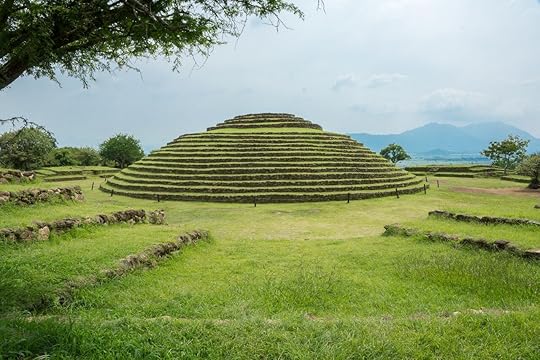
Photo: Omaly Darcia/Shutterstock
One of the valley’s most notable features is the Guachimontones. These circular pyramids date back to around 300 BCE, and consist of round central altars surrounded by a square platform. Built as tombs by the Teuchitlan people, these pyramids can be accessed via a steep hike from the nearby Interpretive Center. The grass-covered pyramids are worth devoting a day to exploring.
Where: Piramide circular, Carretera Estatal 604 Guadalajara-San Marcos Gral. Lucio Blanco, Estanzuela, 46762 Guachimontones, Jal., Mexico
Los Azules waterfallsFor a more relaxing and tranquil hiking experience, trek down the short trail through the Tequila Canyon to Los Azules waterfalls. Just 10 minutes from town, the waterfalls can be accessed via a dirt road, bookended by blue agave plantations, which turns into a ravine. The falls are 300 feet high, and you could easily spend the whole afternoon swimming in the pool or picnicking under the dense foliage.
Discover the best of Granada with these Airbnb Experiences
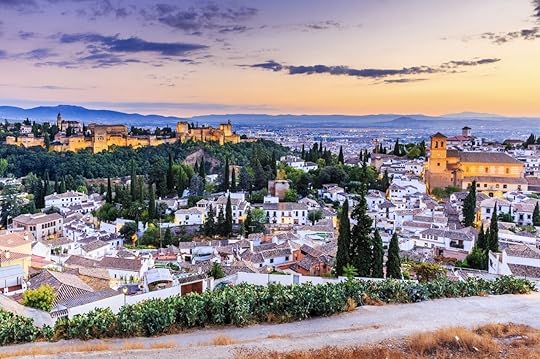
ERNEST HEMINGWAY once said, “If you were to visit just one city in Spain, it should be Granada.” We couldn’t agree more. Located in the foothills of the Sierra Nevada mountains, Granada is just a 40-minute drive from the Mediterranean Sea. Home of The Alhambra, the most visited attraction in Spain, the food is excellent (think of a mix of classic Spanish and Middle Eastern cuisines), and it’s considered one of the most affordable cities to travel to in the country. Many of the best things to do in Granada are found on Airbnb Experiences. Here are our favorites.
We hope you love the Airbnb Experiences in Granada we recommend! Just so you know, Matador may collect a small commission from the links on this page if you decide to book. Listed prices are accurate as of the time of publication. See our full Advertiser Disclosure here.
Learn how to bake Arab pastries following the host’s family recipe (and enjoy tea)
Photo: Airbnb
Awita (Nuria), the host, is the perfect embodiment of the well-known Arab hospitality. She grew up helping her grandparents in the kitchen of a small restaurant in El Albaycin (the old Arab quarter of the city), and that’s how she learned the art of making these tasty treats that, after the workshop, you’ll be able to make, too — even if your baking skills are as weak as mine. While the sweets are in the oven, you’ll enjoy a delicious traditional tea in Awita’s delightful kitchen, while listening to her stories about the city, her family, and what to do in Granada.
Price: from $34 per person
Learn Granada history through this immersive street art tour
Photo: Airbnb
“The walls always speak the language of its inhabitants, reflecting their culture.” This is how Hadrien, the host, introduced us to this incredible Granada Airbnb Experiences street art tour. Hadrien is a French man who’s passionate about art and history. His tours are small (eight people max), which allows for deeper interaction and a more organic way to experience the art and the discussions around it. His knowledge of street art is impressive, and he intertwines it with the history of Granada and Spain and the latest news of the street art international scene. Guests particularly love learning about Granada native artist Niño de las Pinturas.
Price: from $29 per person
Watch the sunset over Granada and the mountains while soaking in natural hot springs
Photo: Airbnb
I loved this spa experience so much I did it twice, on two different trips. The pools are located next to a protected natural area called Dehesas de Santa Fe, surrounded by olive tree plantations and fig trees. The water has a constant 38°C temperature, and by the end of the adventure, you’ll see the sunset over Granada and the Sierra Nevada. Many we saw in the springs were either from a nearby community of people that live off-grid in motorhomes and vans, or locals who had interesting, funny stories to share. The host Thomas is a world traveler from Belgium who is a foremost expert in navigating the confusing layout of the region, meaning you’ll soak in the best springs away from big crowds.
Price: from $49 per person
Take the best sunset photos over The Alhambra from Albayzín and Sacromonte
Photo: Airbnb
I recently spent two weeks slow-traveling in Granada and I can tell you that the best way to discover these two iconic neighbors is by getting lost in the narrow streets. If your time is limited, I strongly suggest you take this tour. Sergio combines his knowledge of history with the most impeccable storytelling ability of any Airbnb experiences in Granada that makes a great introduction to the multicultural, complex story of the city. The tour stops at all the viewpoints, and the Granada sunsets are simply amazing. Your Instagram followers won’t be disappointed.
Price: From $18 per person
Feel all the flamenco feelings in these Airbnb Experiences in Granada with a real “bailaora”
Photo: Airbnb
This is a fun, laid-back class led by Erika, an experienced bailaora (flamenco dancer) who truly enjoys sharing his passion with others. This will be a great first approach at expressing your emotions using the language of flamenco, the signature music of Andalusia (as Erika says, “this class is not about technique, it’s about communicating your emotions.”) You’ll learn the basics of the music and the dance, and then you’ll work on a choreography that you can record to take home with you to practice when you miss the sunshine of Southern Spain. 
Price: From $31 per person
More like thisWhere to Stay9 of the best Airbnbs in BarcelonaBest Airbnbs in Barcelona

Barcelona is among the most coveted destinations in Europe, and it’s easy to see why — legendary nightlife, world-class dining and cafe culture, and an architectural style that is as well-preserved as the city’s vibrant culture. For the easiest access to all Barcelona has to offer, book an Airbnb in the heart of the city. These are nine of the best to put you close to the action, in style.
We hope you love the Barcelona Airbnbs we recommend! Just so you know, Matador may collect a small commission from the links on this page if you decide to book a stay. Listed prices are accurate as of the time of publication. See our full Advertiser Disclosure here.
1. Penthouse with roomy terrace near Paseo de Gracia
Photo: Airbnb
This spot is perfect for relaxing on the terrace and taking in the sun over a glass of wine. And that’s just the outside. Inside this penthouse unit you’ll find a modern kitchen, vaulted ceilings, and plenty of space to spread out and be productive (or just lounge in front of the television). Located in the heart of the city and not too far from the beach, you’ll find this penthouse apartment to be convenient and charming, with a touch of local flare.
Price: $176 per night
2. Batllo luxury in prime location
Photo: Airbnb
A short walk from Plaza Catalunya and the Paseo de Gracia metro station, this spacious apartment sleeps up to seven in three full bedrooms, with a bathroom to match each. Despite being in the center of one of Europe’s most vibrant cities, the unit itself is secluded and quiet, a peaceful respite from the beaches, cafes, and museums likely to occupy your daily itinerary while in Barcelona. If you decide to spend a night in, take advantage of the well-equipped kitchen and prepare your own Escalivada.
Price: $228 per night
3. Vintage concept flat in chic neighborhood
Photo: Airbnb
The owner of this vintage flat clearly has a taste for colorful art. In classic Barcelona style, the unit is defined by vaulted brick ceilings, but the yellows, greens, and blues of the adornments and decor give the unit a unique vibe. Nearby to trendy cafes, nightlife spots, and dining, this flat is also priced appropriately for a longer stay in the city, especially if you are traveling as a couple, family, or small group of up to five.
Price: $117 per night
4. Barcelona villa in peaceful setting
Photo: Airbnb
Set a short drive out of the city, this peaceful lodge comes complete with a pool and lots of space to lounge. Serenity is the vibe here, with nature taking a front seat and defining the stay as much as the well-adorned insides of this three-bedroom home. With large windows and fast internet, this house is perfect for a family or group of friends to set up basecamp for exploring Catalunya, whether that means a week in the city or a dash of escapes out to the countryside.
Price: $351 per night
5. Chic, sophisticated gem in Eixample
Photo: Airbnb
This sophisticated apartment in the trendy Eixample area is best described as minimalist meets artistic modern. Chill over the city views from the balcony, spoil yourself in the bathroom’s spa vibes, and walk to nearby tourist attractions, restaurants, and bars — this apartment literally could not be more centrally located in Barcelona. There are two bedrooms, each bright and vibrant, setting the mood for exciting days exploring this historic city.
Price: $100 per night
6. Amazing penthouse in Ramblas
Photo: Airbnb
Spacious and with three bedrooms and a large outdoor dining and relaxing space, this Ciutat Vella penthouse apartment is centrally located and gives you a top-down view on the city. Walk to Ramblas and Plaza Catalunya for your shopping and sightseeing needs, or tour the nearby Contemporary Art Museum and Plaza Universidad for a taste of Barcelona’s living history. Spend mornings strolling the Joaquin Costa, a pedestrian thoroughfare accessing the best of the city’s cafe culture, and evenings sipping Cava on the veranda.
Price: $181 per night
7. Unique property in Old Barcelona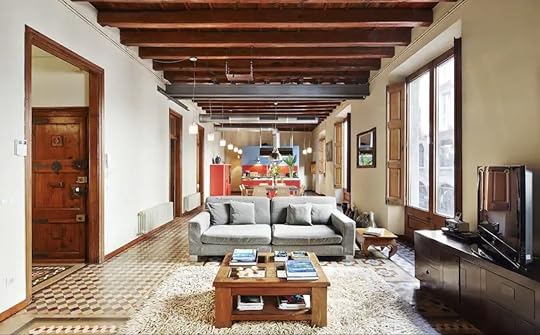
Photo: Airbnb
One thing that is as true in Barcelona as elsewhere in Europe is the value of the efficient use of space. This flat is uniquely designed to optimize what is already a spacious unit. Here, in a wood-paneled apartment in the center of Ciutat Vella and greater Old Barcelona, you’re a moment’s walk from Palau de la Música Catalana, Plaça de Catalunya, and the cathedral, as well as all of the vibrant social settings that surround them. Of course, take advantage of the luxurious living space, as well.
Price: $151 per night
8. Attic duplex in Ramblas, Gothic Quarter
Photo: Airbnb
Barcelona’s best balcony is yours in this upscale penthouse in the Gothic Quarter. You’ll look out over the city in style, with the Music Center and El Luceo down below. Walk everywhere in the city center, with some of Barcelona’s best chefs cooking paella and patatas bravas just up the street, and should you elect to participate in the late-late-late-night partying Barcelona is known for, you’ll arrive home to a bright and welcoming spot without having to worry about traversing across the city.
Price: $298 per night
9. Luxury apartment in Paseo de Gracia
Photo: Airbnb
Gaudi’s famous work, Casa Batllo, is literally right out the window of this apartment, one of the nicest penthouses in the city and certainly a treat considering it’s right near Paseo de Gracia. It’s known as the Godo Luxury apartment, and you’ll see why immediately upon entering — five bedrooms, five baths, two living rooms, and a spacious kitchen, just above the city’s beating heart and of course, there’s the unbeatable view of Casa Batllo, it’s impossible not to be wowed by this flat. With room for 10 guests, a group can go in together to cover the cost. 
Price: $546 per night
A version of this article was previously published on December 14, 2014, and was updated on April 5, 2021, with more information.
More like thisArt + ArchitectureIconic Barcelona architecture that you can check out for freeMatador Network's Blog
- Matador Network's profile
- 6 followers



